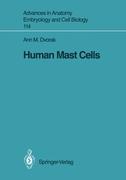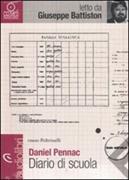- Start
- Human Mast Cells
Human Mast Cells
Angebote / Angebote:
8 References . 95 Subject Index 101 VIII 1 Introduction Mast cells and basophils were first described by Ehrlich (1877, 1878, 1879). Although these cells share many functional properties, they can readily be distinguished using morphological criteria (Dvorak 1986a, Dvorak et al. 1983a, 1983c, Galli et al. 1984). The identification of immunoglobulin E (IgE) and high affinity IgE receptors on mast cells and basophils was instrumental to our understanding of the mechanisms underlying the role of these cells in immediate hypersensitivity reactions (Ishizaka and Ishizaka 1979, Ishizaka et al. 1966, 1972, 1973, Tomioka and Ishizaka 1971). We now know that these IgE-mediated mechanisms as well as a number of other stimuli can cause the rapid release of many preformed mediators of inflammation from both mast cells and basophils (Galli et al. 1984). The most well-known of these is histamine. Potent mediators that are not preformed are also stimulated and released from these cells. Recently, products of arachidonic acid metabolism, such as the prostaglandins and leukotrienes, have been found to be generated either by the cyclooxygenase pathway or the lipoxy genase pathway in mast cells and basophils (Lewis and Austen 1981, 1984, Peters et al. 1984, 1987). Detailed studies and reviews of the biochemistry of these mediators and their immunologically mediated reactions have been published (Lewis and Austen 1981, 1984, Lichtenstein et al. 1979, MacGlashan et al. 1982b, Paterson et al. 1976, Peters et al. 1984, 1987). Mast cells and basophils contain other important biochemicals.
Folgt in ca. 5 Arbeitstagen



